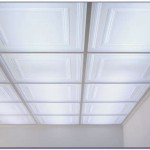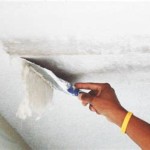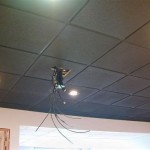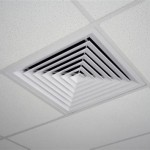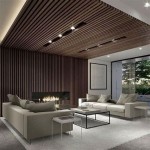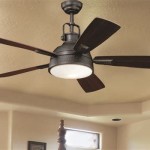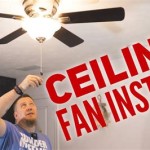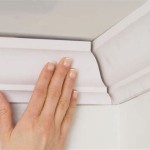What Is False Ceiling Cost?
A false ceiling, also known as a drop ceiling, is a secondary ceiling that is suspended below the original ceiling. It is commonly installed in residential and commercial buildings to achieve various aesthetic and functional purposes. The cost of a false ceiling depends on several factors, including the type of materials used, the complexity of the design, and the size of the area to be covered.
Factors Influencing False Ceiling Cost
The cost of a false ceiling can fluctuate significantly depending on several factors. Understanding these factors is crucial for budgeting and making informed decisions.
1. Material Selection
The choice of materials plays a significant role in determining the cost. Different materials have varying prices and offer distinct advantages and disadvantages. Some common materials for false ceilings include:
- Gypsum boards: Widely used due to their affordability, durability, and ease of installation. They offer good sound insulation and are fire-resistant.
- Mineral fiber boards: Known for their excellent fire resistance and sound absorption capabilities.
- Wood: Adds warmth and natural beauty to the space but can be more expensive than other options.
- Metal: Offers modern aesthetics, durability, and fire resistance, but can be pricier.
- PVC: Lightweight, waterproof, and easy to clean, often used in bathrooms and kitchens.
2. Design Complexity
The design of the false ceiling directly influences the cost. Simple, flat ceilings are generally less expensive than complex designs with intricate patterns, multiple levels, or integrated lighting features. The complexity of the design affects the amount of labor needed, potentially increasing the overall cost.
3. Area to Be Covered
The size of the area to be covered with the false ceiling is another significant factor. Larger areas naturally require more materials and labor, leading to higher costs. It is essential to consider the overall square footage of the ceiling area when budgeting for a false ceiling project.
4. Additional Features
Adding features to the false ceiling, such as built-in lights, recessed speakers, ventilation systems, or decorative moldings, will increase the overall cost. The cost of these features can vary widely depending on their complexity and quality.
5. Labor Costs
Labor costs contribute significantly to the total cost of a false ceiling installation. Skilled laborers are required for accurate measurements, installation, and finishing. Labor costs can vary depending on the location, experience of the contractor, and the complexity of the project.
Benefits of False Ceilings
False ceilings offer numerous advantages, making them a popular choice for both residential and commercial spaces. Some of the key benefits include:
1. Aesthetics and Design Flexibility
False ceilings provide a canvas for creating various aesthetic looks. They can be used to enhance the overall design scheme, hide imperfections in the original ceiling, or create distinct zones within a space.
2. Improved Acoustics
False ceilings can significantly improve the acoustics of a room by absorbing sound, reducing reverberation, and minimizing noise levels. This is especially helpful in open-plan spaces, offices, and entertainment rooms.
3. Enhanced Energy Efficiency
The space between the original ceiling and the false ceiling can be used to install insulation, which can help reduce heat loss in the winter and heat gain in the summer, leading to improved energy efficiency.
4. Concealing Wires and Pipes
False ceilings provide a convenient way to conceal electrical wiring, plumbing pipes, and other utilities, creating a cleaner and more aesthetically pleasing appearance.
5. Integrated Lighting
False ceilings offer the opportunity to incorporate various lighting systems, such as recessed lights, spotlights, and ambient lighting, creating a personalized and functional lighting scheme.
Choosing the Right False Ceiling
Choosing the right false ceiling for a project involves considering several factors, including the desired aesthetic, budget, and functional requirements. It is essential to consult with a qualified contractor or architect to determine the most suitable type of false ceiling for the specific needs of the project.
Understanding the factors that influence the cost of a false ceiling is crucial for making informed decisions during the planning and budgeting phases. By considering the material selection, design complexity, area to be covered, additional features, and labor costs, individuals can create a realistic budget and achieve their desired aesthetic and functional goals.

False Ceiling Cost A Complete Guide To Budgeting Your Project

False Ceiling Cost Tips To Calculate Your Expenses Beautiful Homes

False Ceiling Contractors From 48 Sq Ft Shaj Interior

False Ceiling Cost A Complete Guide To Budgeting Your Project

Types Of False Ceiling Cost Paam Construction

Modern False Ceiling At 75 Square Feet In Lucknow Id 15421346630

False Ceiling Cost Gypsum Pvc Armstrong Trenderior

False Ceiling Cost A Complete Guide To Budgeting Your Project

Cost Of False Ceiling Design For Home Decorpot Interiors

How Much Does A False Ceiling Cost
Related Posts

